Adventurers in Utah for Spike
150
Promontory Summit -
150 years later
A Sesquicentennial
Chapter Eight
Big Boy head to head with 844 in Ogden
Visiting Temple Square
Attending Tabernacle Choir rehearsal
May 9, 2019
Thursday
by
Robin Bowers
Text and Photos by Author
The
author retains all rights. No reproductions are allowed
without the author's consent.
Comments are appreciated at...yr.mmxx@gmail.com
Chris
and I arose from our slumber at 5:45 am then I left our room a
few minutes after he did. Leaving the hotel I walked on South
Temple to the Arena Station where I met up with Chris to wait
for our train to Salt Lake Central Station. We would board a
westbound Blue Line train here at Arena Station and ride to the
end of the line at Salt Lake Central Station, in the free ride
zone. Our trip was only a few minutes long then we arrived at
the Salt Lake Central Station. We walked over the the Am shack
which was so sorrowful that I was too embarrassed to take a
photo of said structure.
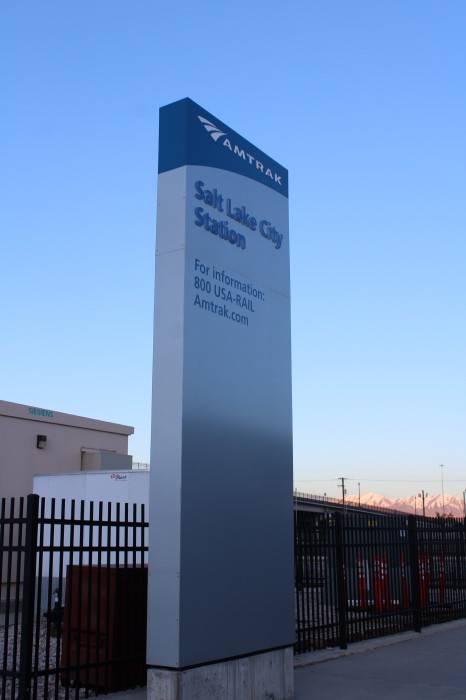
We then walked over to the platform and then were met by several
NHRS people going to Ogden this early morning, animated talking
about the upcoming meeting event.
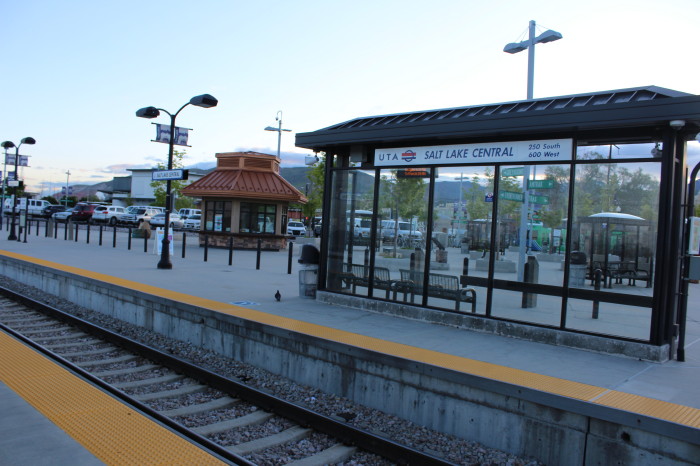
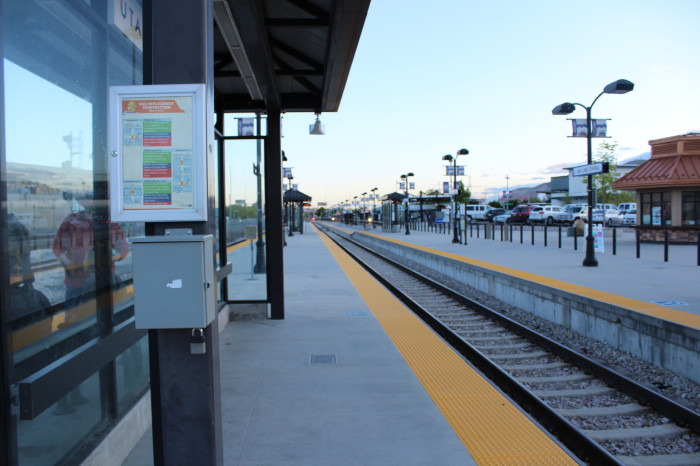
Looking north towards Ogden.
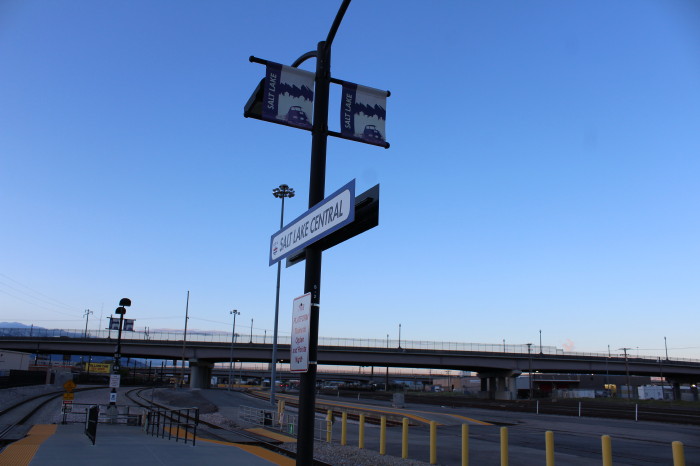
Looking south towards Provo.
Our train arrived and we left at 6:55 am arriving in Ogden at 7:54
am.
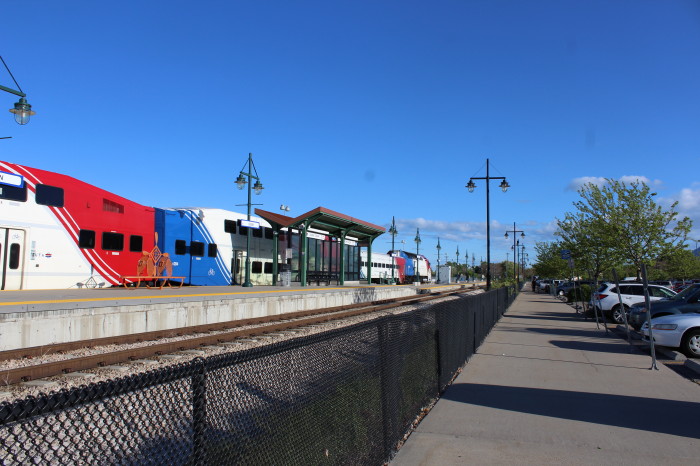
Our train at the Ogden platform.
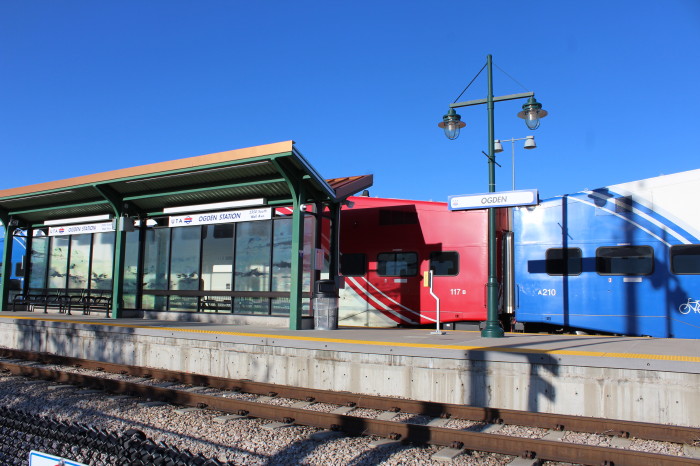
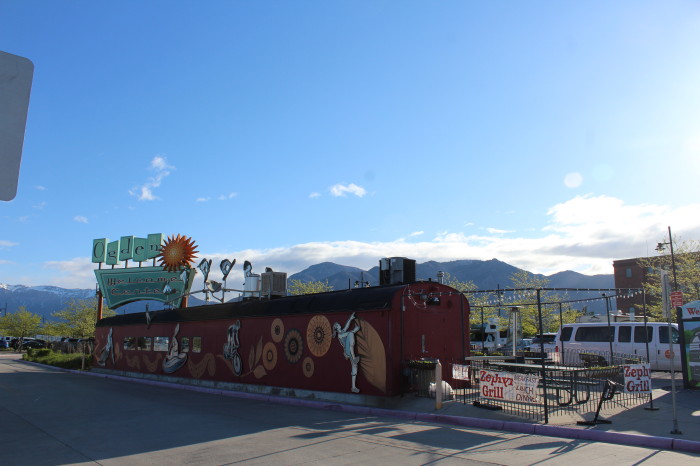
Zephyr Grill where Chris and I had a good breakfast to start off a
long day.
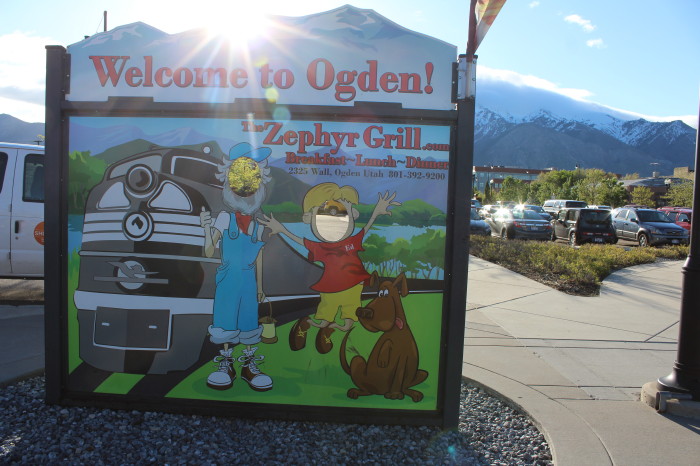
After finishing our breakfast at the Zephyr
Grill, we went into the Ogden Depot where a Union Pacific event
was going on and a very nice young lady offered to take us over
to the Union Pacific press tent.
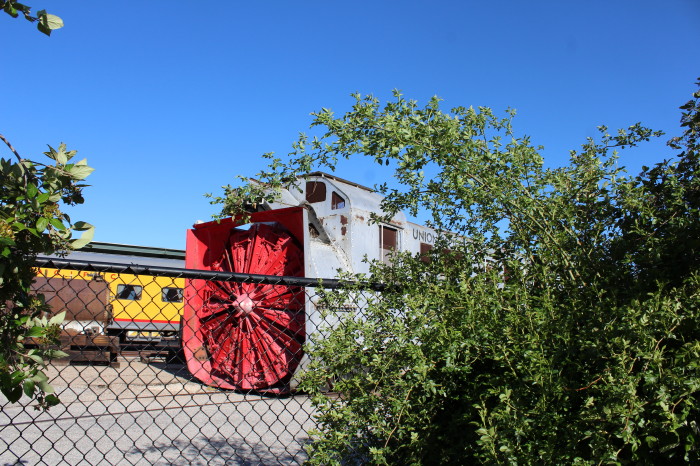
Static display on museum grounds.
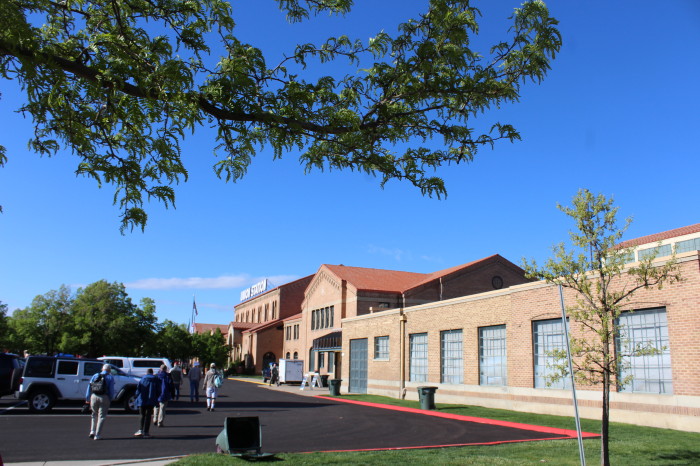
Ogden Union Station Museums. Four museums and two art galleries
are housed in this former 1924 train station.
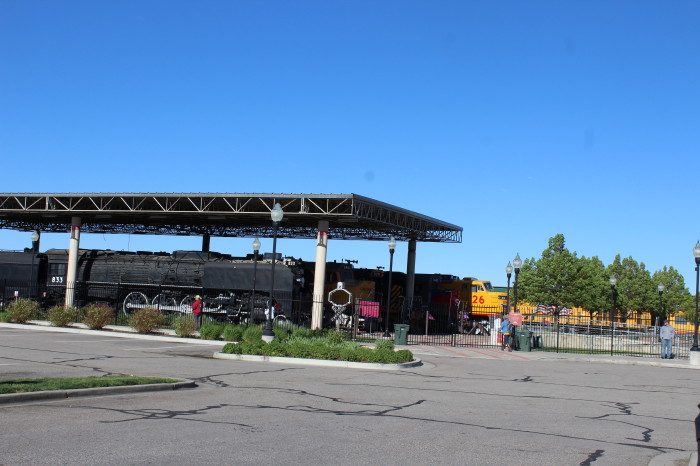
Locomotives on display but off limits today while the big event
occurs.
Our escort took us through
security and led us the rest of the way to the Union Pacific
Press tent. There we were given a press badge with Union Pacific
information in it and then told where we could go and not go. We
then walked out the tent with our badges and found the press
pen.
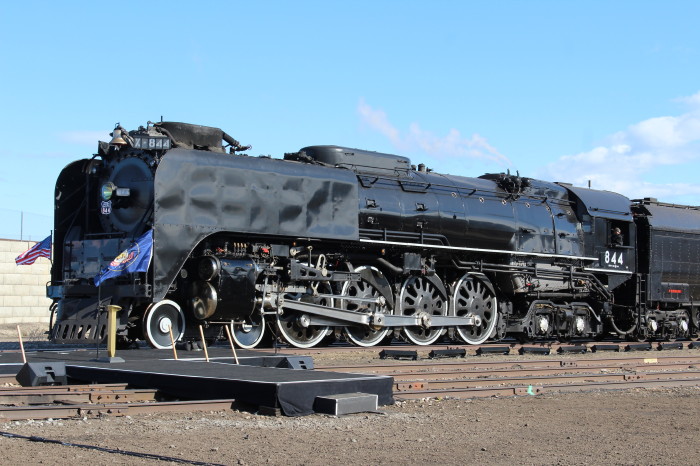
.jpg)
.jpg)
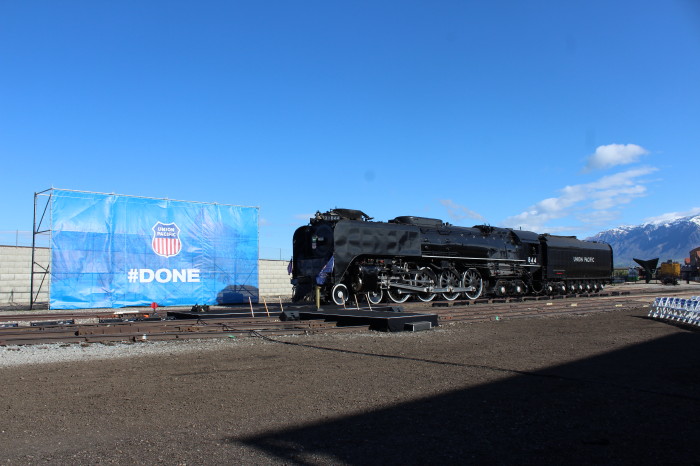
Nose to Nose means the railroad was done.
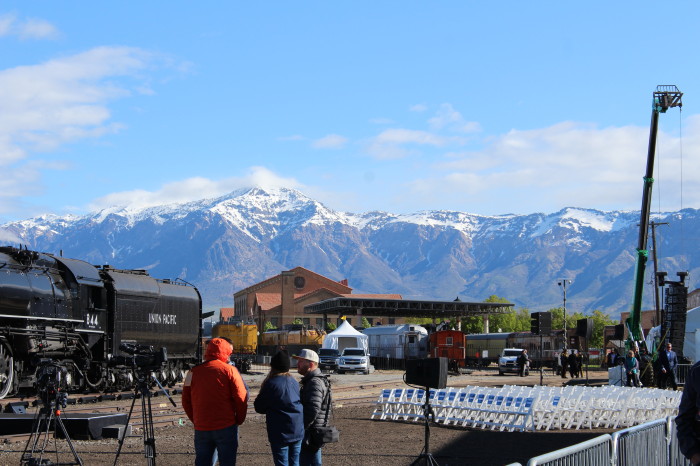
VIP seating with the Ogden Museum in back.
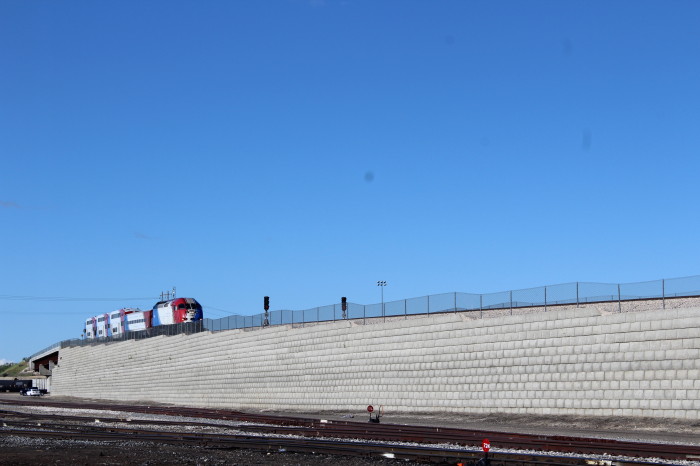
A Frontrunner train into Ogden arriving on the UTA flyover.
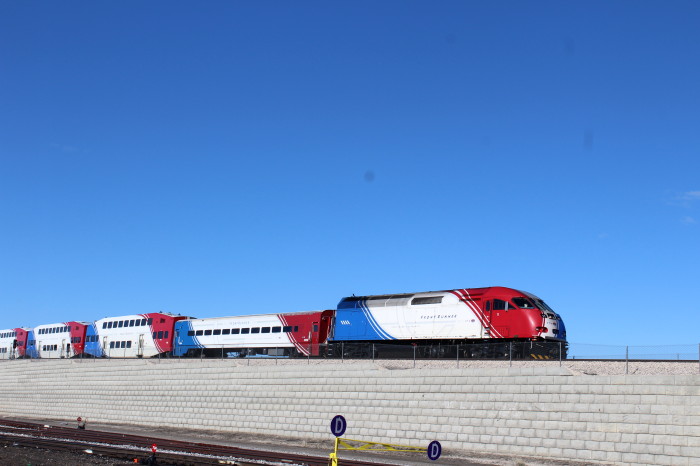
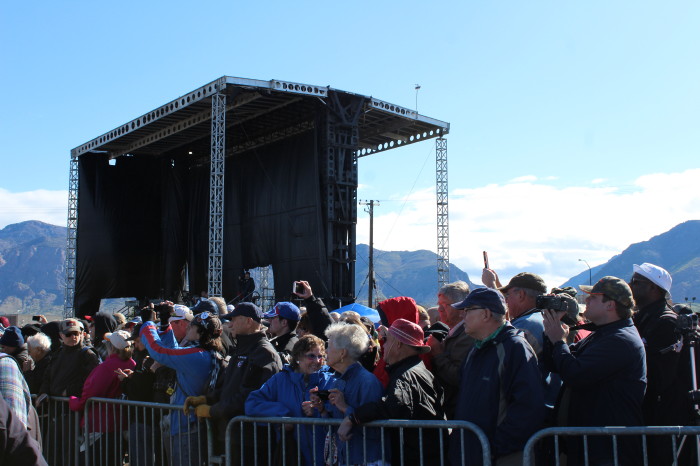
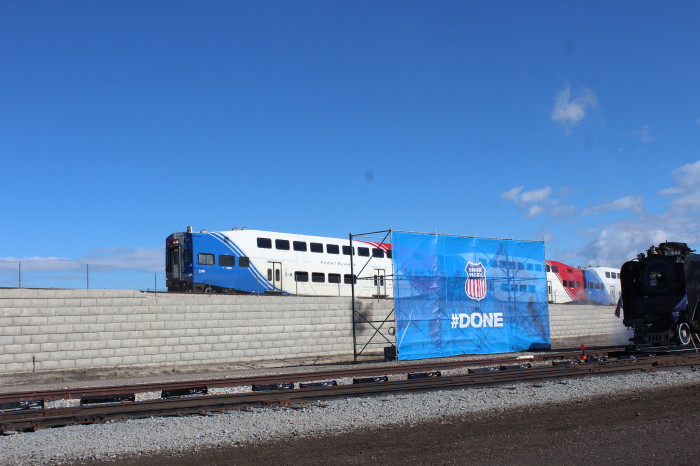
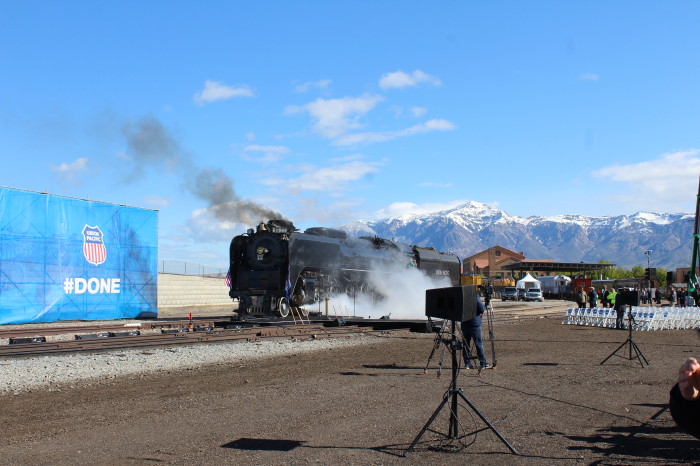
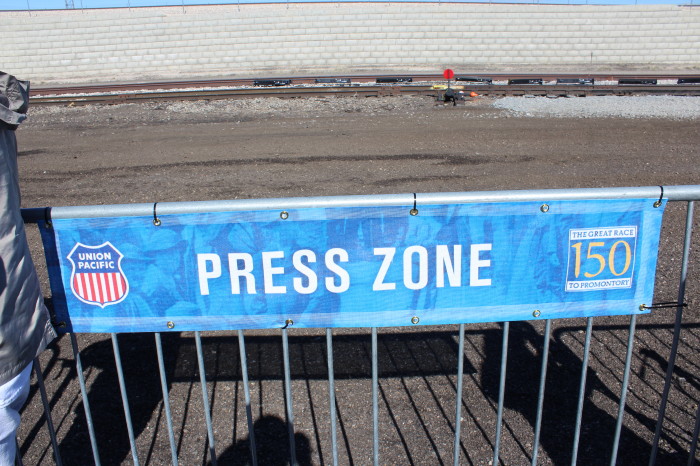
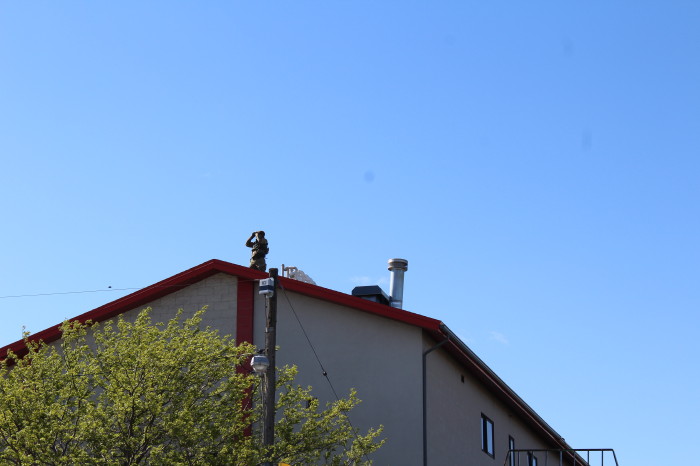
Keeping an eye on you.
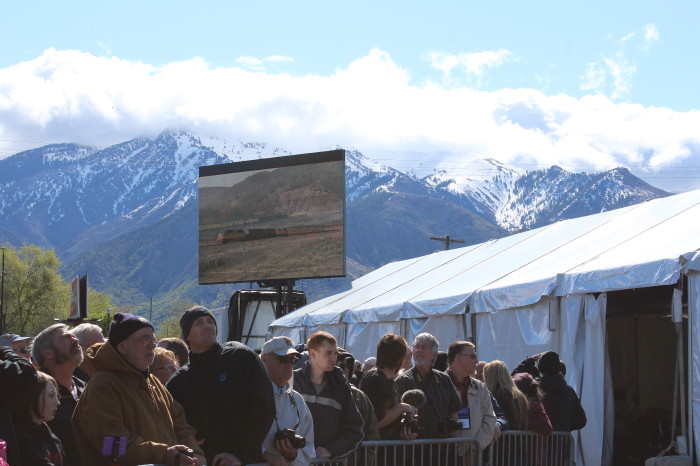
The crowd behind the press zone with an Union Pacific video on the
big screen.
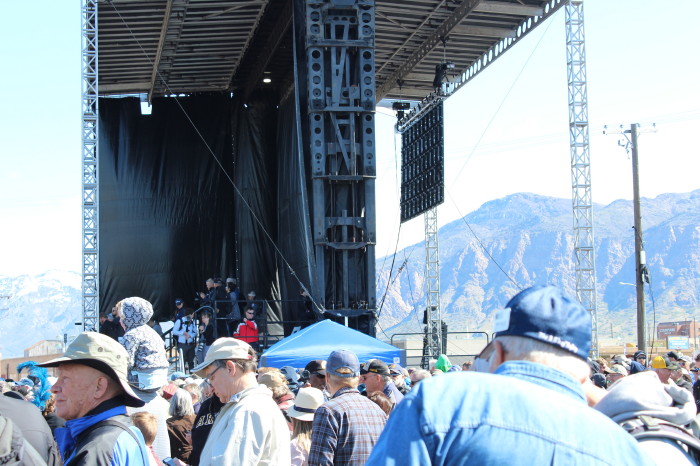
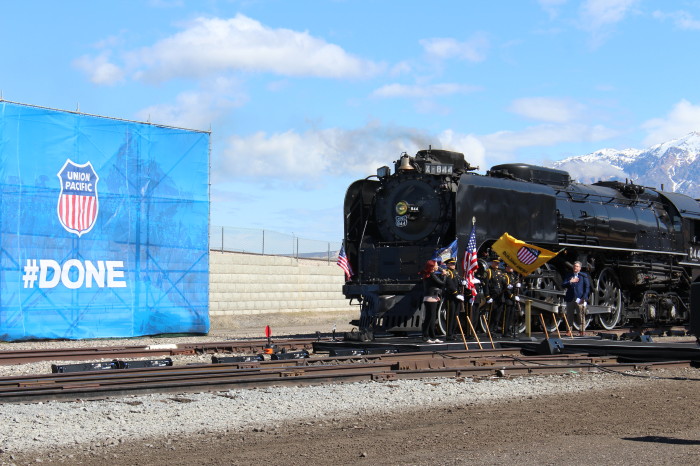
The Master of Ceremonies
started this morning with a welcome then the Union Pacific Color
Guard marched in with the Flags of America and the Union Pacific
after which a young lady sang a wonderful rendition of the Star
Spangled Banner of the United States. After the Union Pacific
Color Guard marched off the stage, the Chairman of the Union
Pacific Lance M. Fritz spoke: Let's get to what we came in for
to celebrate on this morning. To my left Union Pacific 844 the
Living Legend brought by the Union Pacific runs out at 100 MPH.
On my right, the latest steam locomotive to join the Union
Pacific Family 4014 and 1.2 million pounds 7000 horsepower of
steel and fire. Let's get started for what we all came for." He
then called the Union Pacific Big Boy 4014. Union Pacific 4014
responds "Chairman Lance Fritz over, "I'm in position in front
of your locomotive, are you ready to move?" "UP 4014 is ready to
proceed?" Fritz answers " UP 4014 take them ahead"
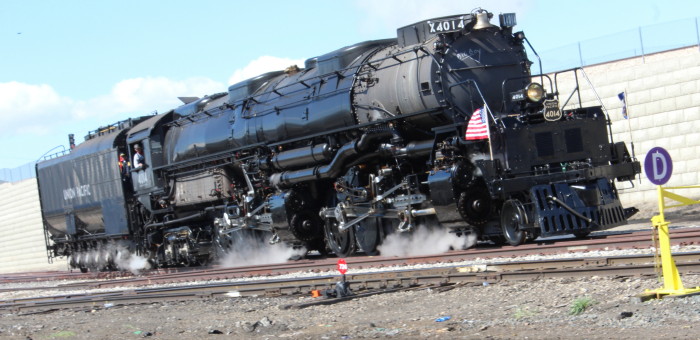
Ready for the cameras.
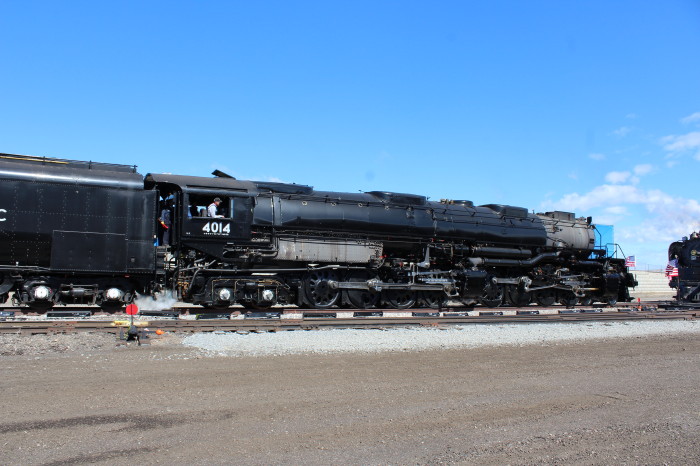
.jpg)

.jpg)
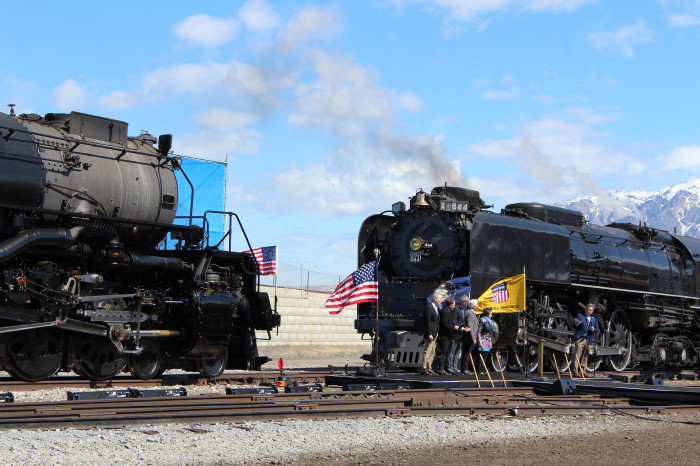
Union Pacific Big Boy 4014 moved into nose to nose position with
the Union Pacific
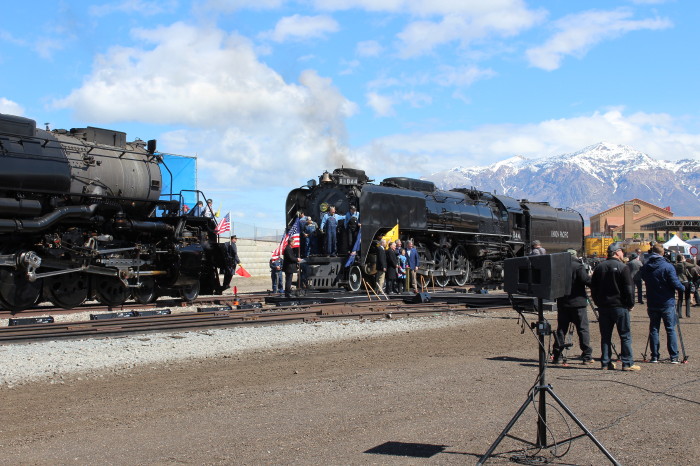
Next we heard from Governor of Utah Gary Herbert who give a brief
talk about the history of Utah and its railroads then called up
four relatives of people who had played a part in railroading
during that period and talked about their history.
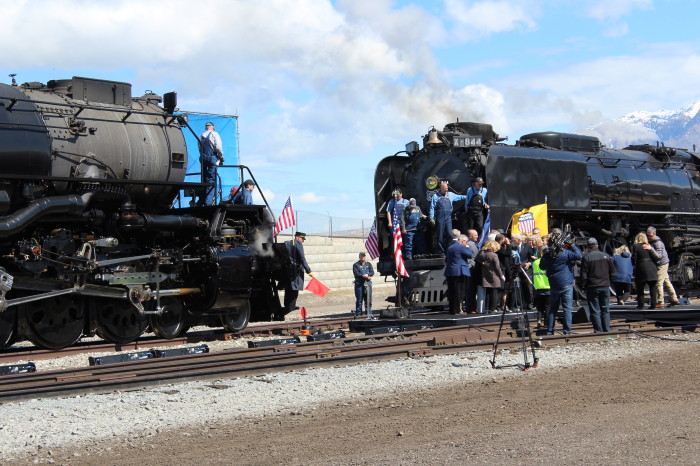
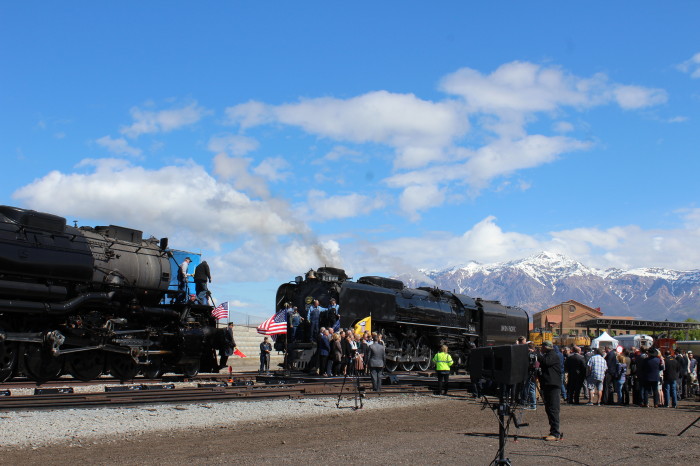
After hitting the large golden spike, the ceremony comes to a
close.
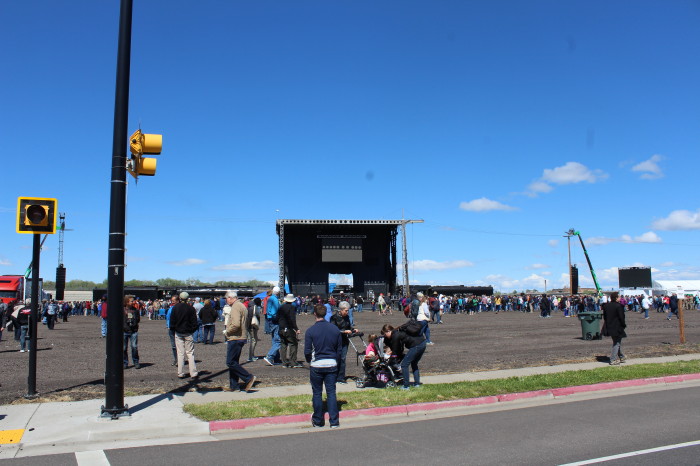
Just a few weeks ago, this was a scrap yard for the Union Pacific.
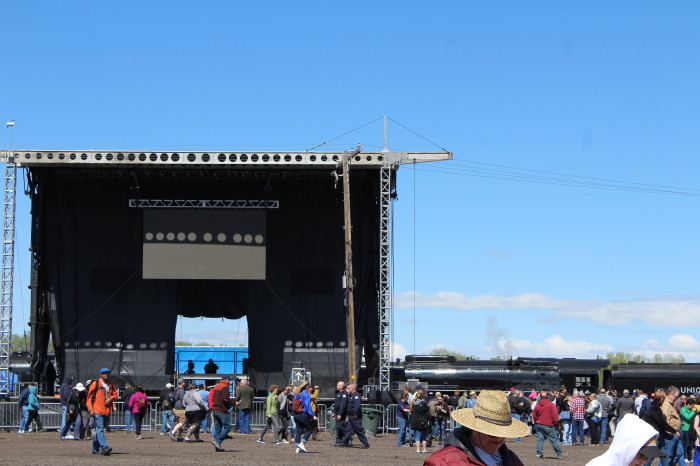
As we left the press area Chris said he was going to meet
Elizabeth and went on ahead. I took a sightseeing walk back to the
platform, wondering if in this crowd I would spot a friendly face.
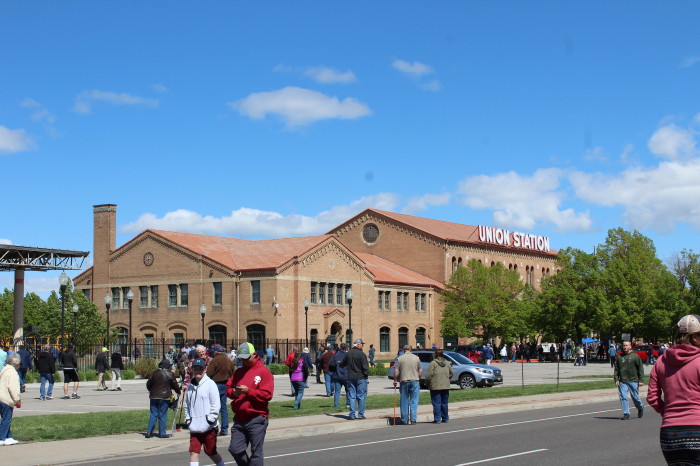
Ogden's importance as a rail
center dates from 1869, when the golden spike uniting the nation
by rail was driven at Promontory, to the northwest; the main
rail junction was moved here soon afterward. Brigham Young
designed the city's layout, which features broad, straight
streets lined with box elder, elm and poplar trees.
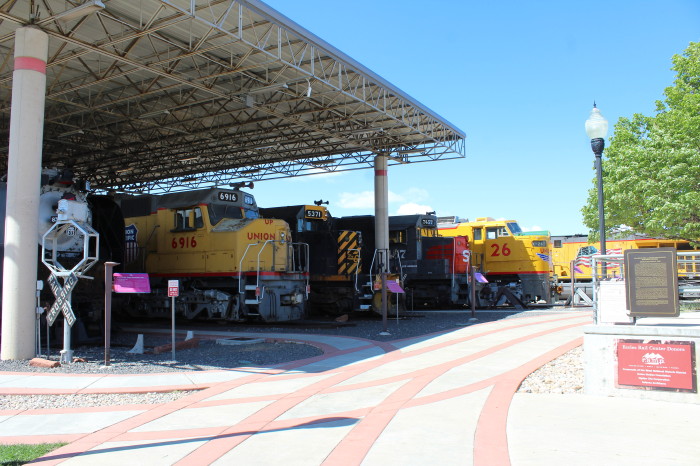
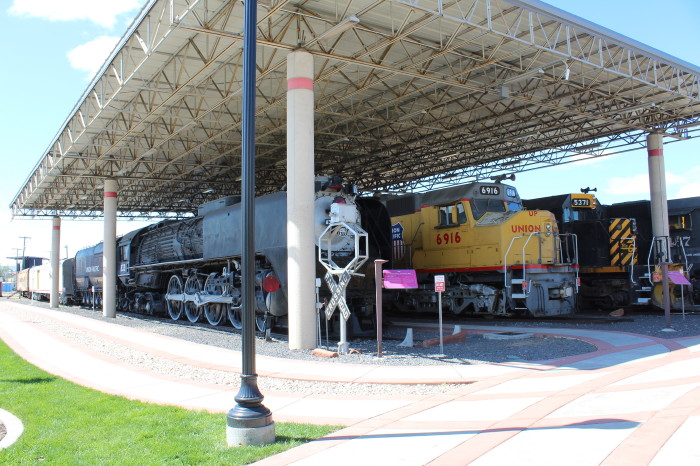
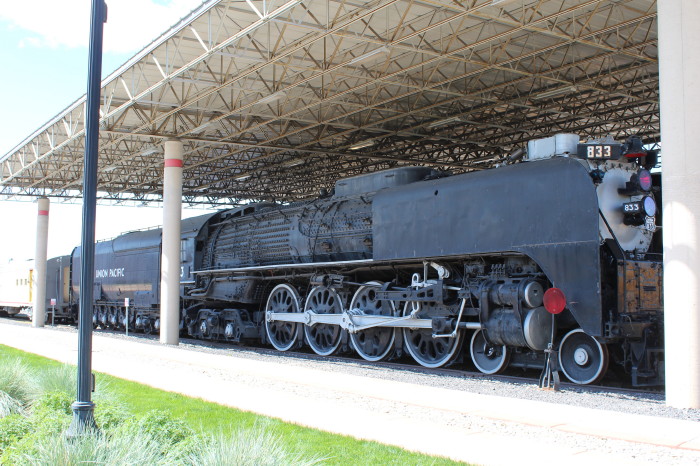
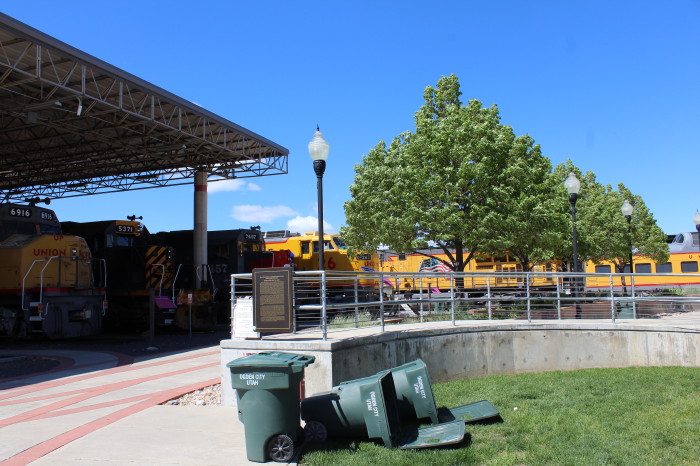
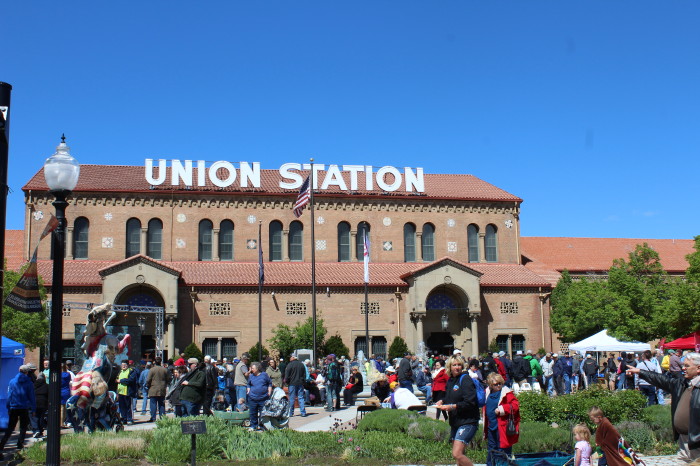
The John M. Browning
Firearms Museum displays the well-known handguns, rifles and
machine guns created by Ogden's Browning family. The Utah State
Railroad Museum interprets the state's railroad history and
includes the Wattis-Dumke Model Railroad Museum, featuring model
trains representative of the transcontinental line from
California to Wyoming. The Eccles Rail Center outdoor exhibit
displays vintage engines and cars. The Browning-Kimball Classic
Car Museum exhibits a collection of elegant early 20th-century
automobiles. Artifacts and old photographs can be seen in the
Utah Cowboys and Western Heritage Museum; Archive Hall displays
the station's permanent art collection. If the museums
were open today I know I could lose a few hours easily in there.
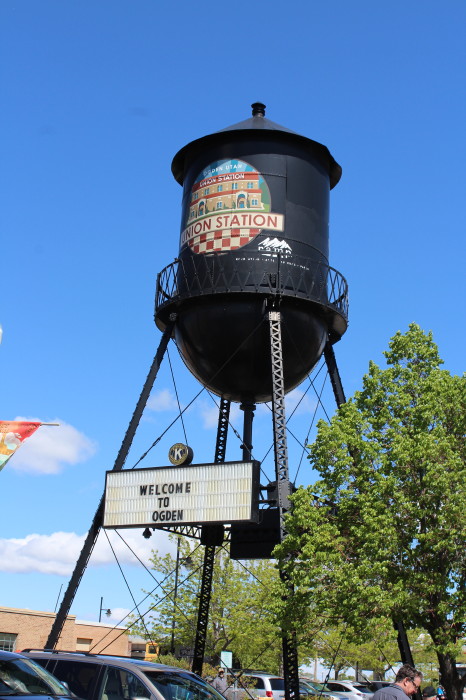
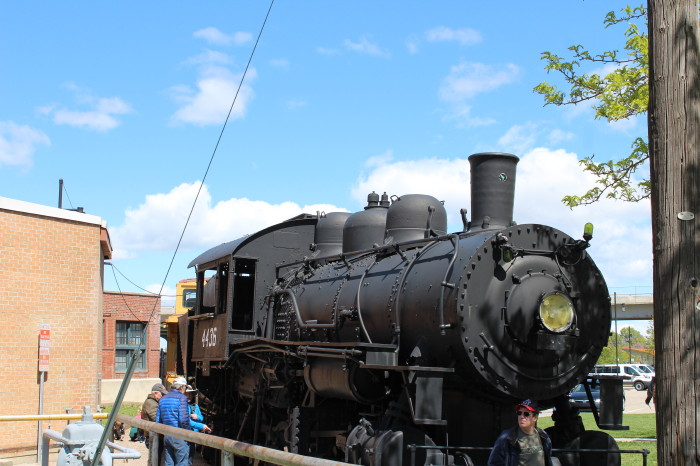
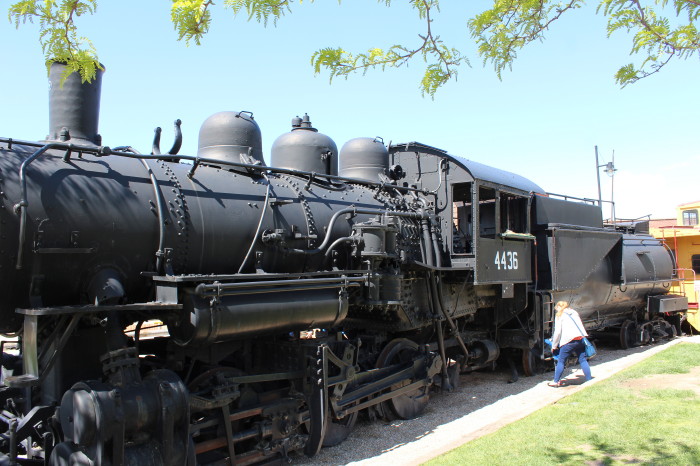
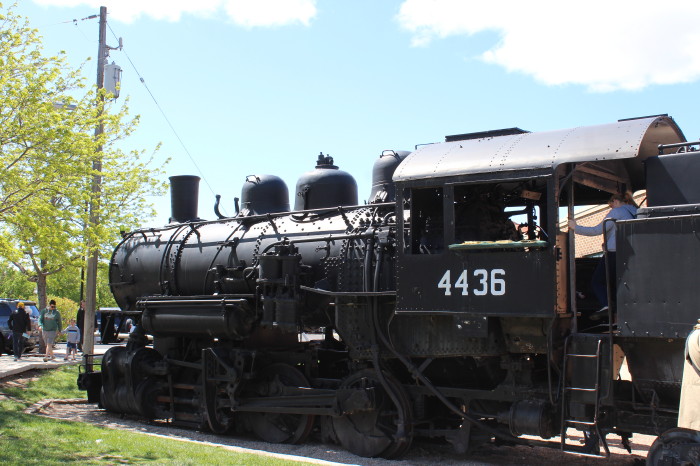
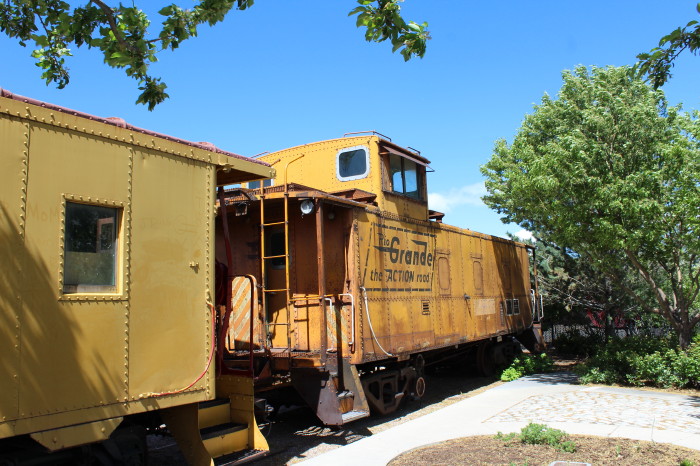
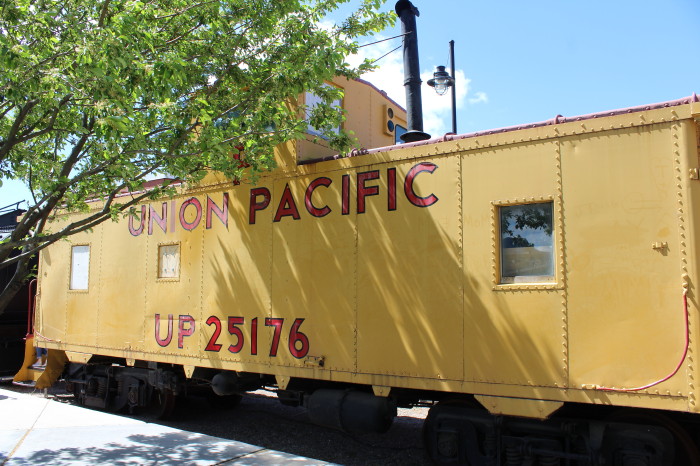
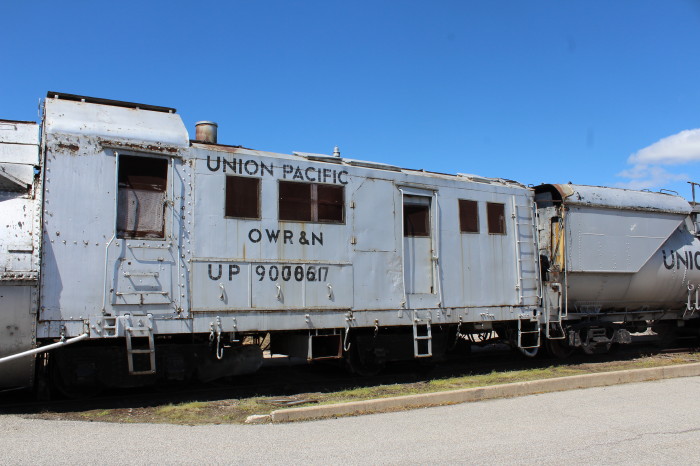
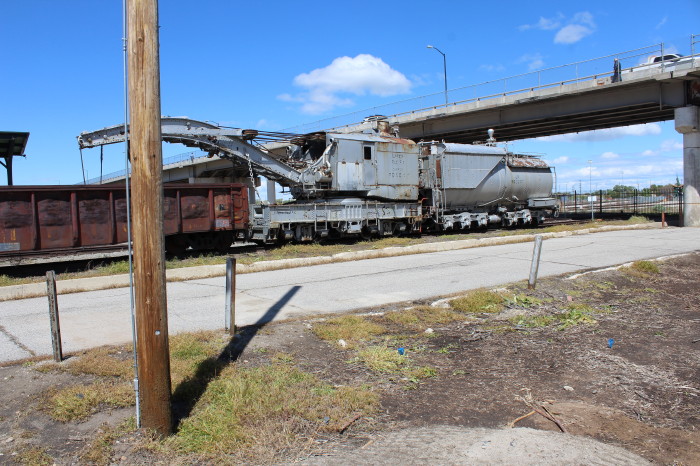
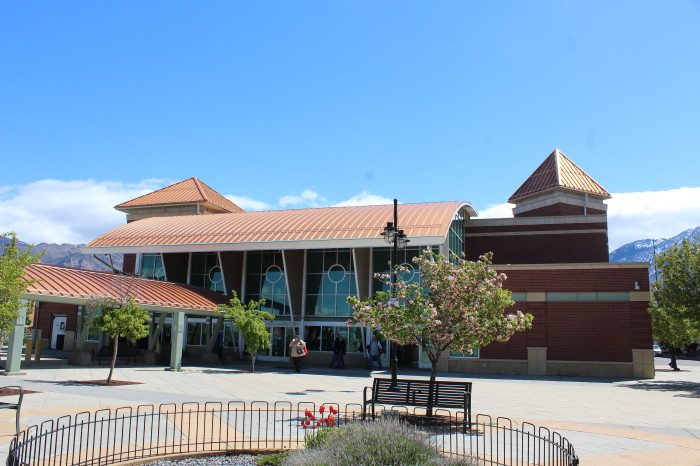
Ogden Intermodal Transit Center.
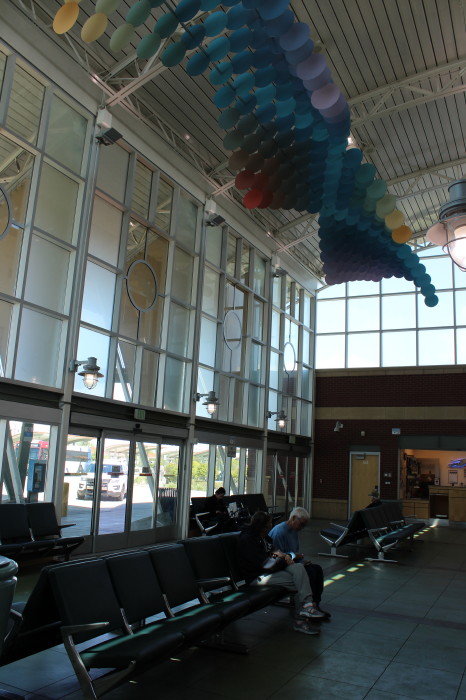
Inside the Ogden station.
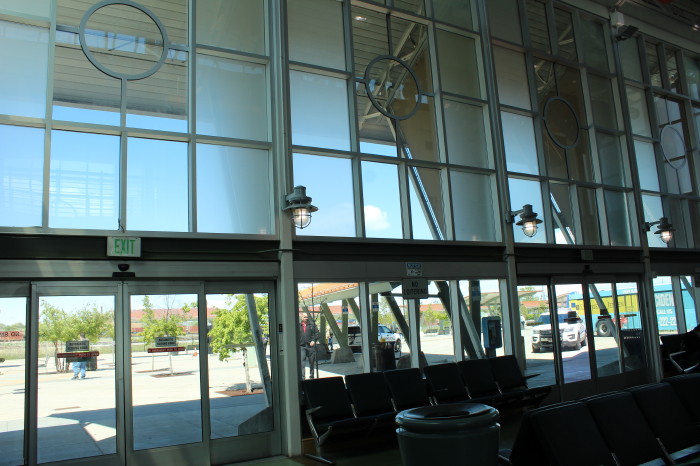
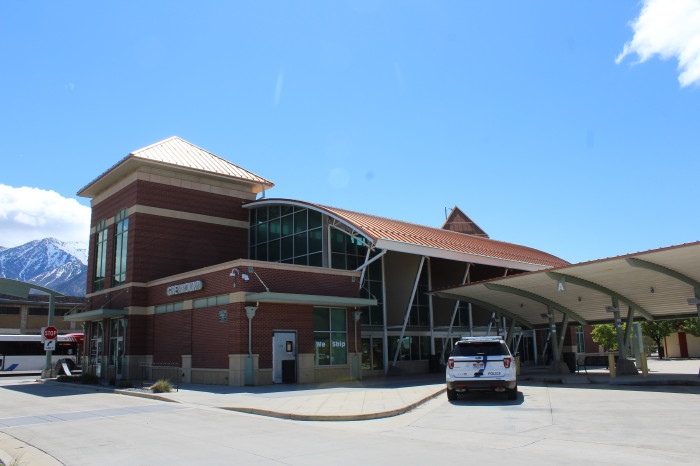
Greyhound bus bays.
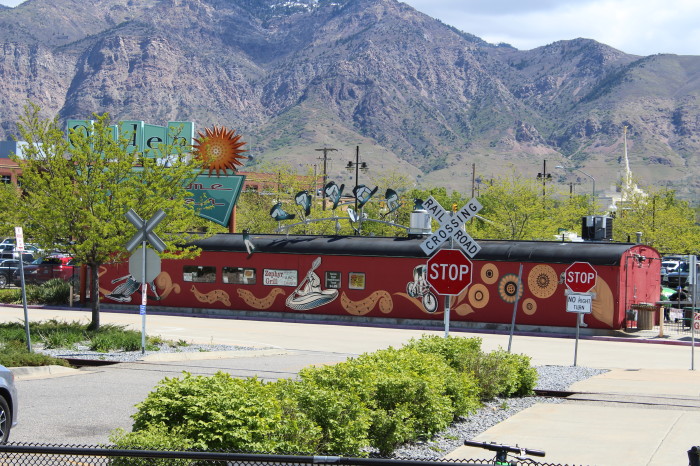
Zephyr Grill between the station and the platform.
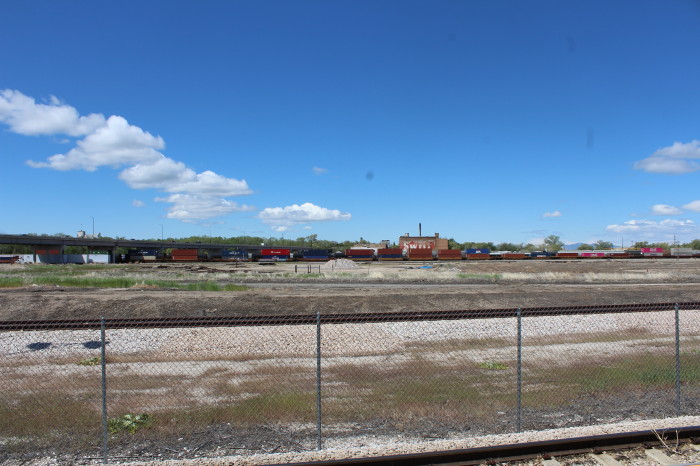
Ogden train yard.
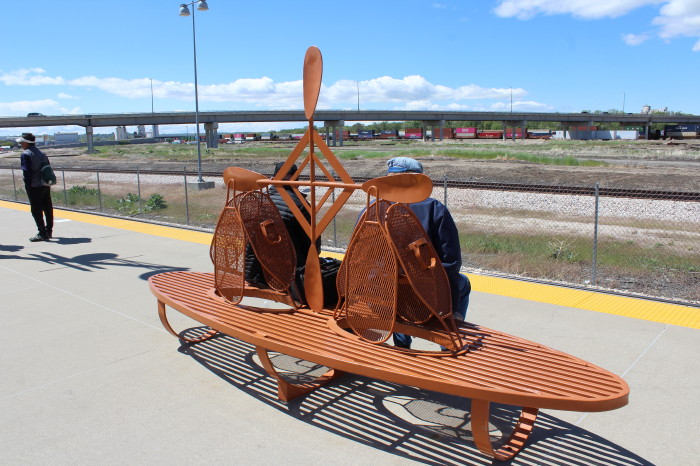
Art work on Ogden platform.
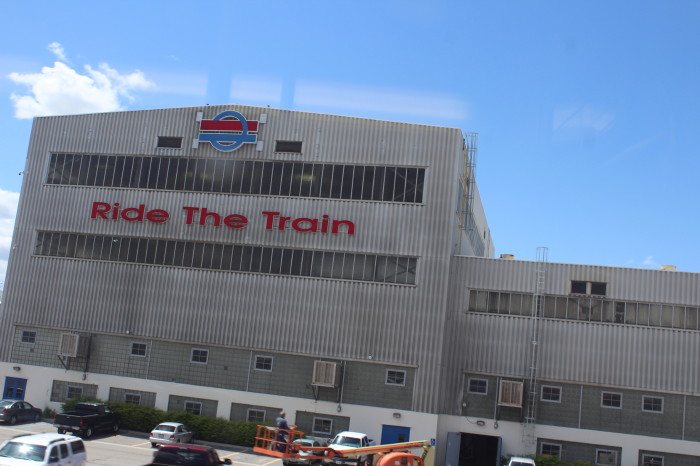
The UTA Ride the Train shops at North Yard.
For our evening feast Chris
and I met Elizabeth and Bob at JB's Family Restaurant adjacent
Bob and Elizabeth's hotel, the Salt Lake Plaza located across
the street and in the next block from our hotel. After several
meals here, this eatery was fast becoming the favorite of all
four of us. After breaking bread we all went on our separate
ways and I went around the corner of Temple Square and walked
over to the Information Building to inquire about this evening's
rehearsal of the Tabernacle Choir. In the convention information
sent out beforehand was a list of points of interest and things
to do. That's where I noticed that the choir has their public
rehearsal on Thursday evening at 7:30 to 9:30 pm. The lady at
the information desk said the doors would open in about 45-50
minutes and there would be no problem getting a seat. That gave
me some time to stroll the Temple Square and look at the
buildings.
Temple Square
Temple Square is bounded by
North Temple, South Temple, West Temple and Main streets. This
35-acre, three block area contains the principal buildings of
The Church of Jesus of Latter Day Saints, the Seagull Monument
and several other memorials and statues.
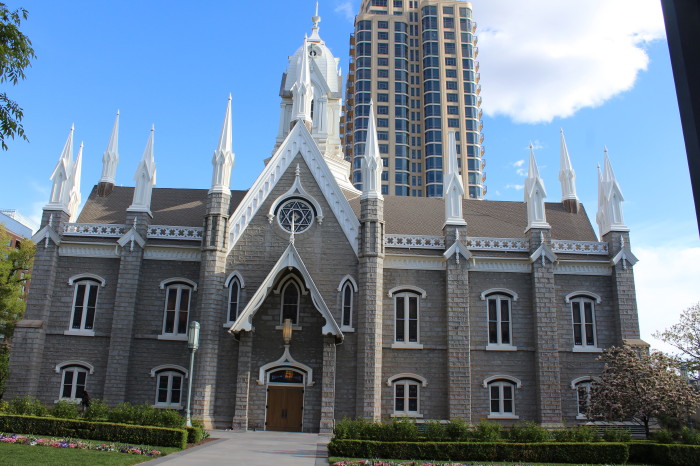
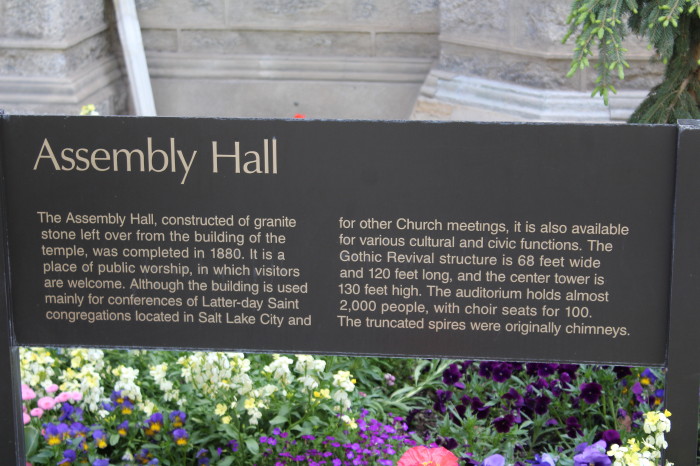
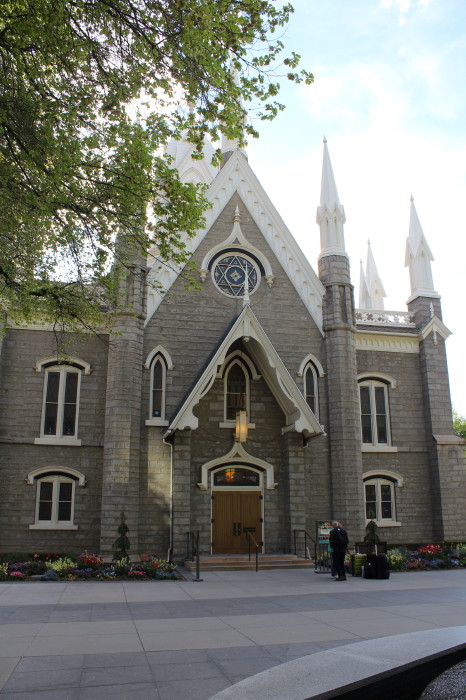
Step into one of the most historical buildings
on Temple Square.
One of the more extraordinary
and historic buildings on Temple Square is the Assembly Hall.
This building replaced an older tabernacle that was no longer
needed after the current Tabernacle
was completed in 1875. The Assembly Hall was built so that
several congregations in the Salt Lake Stake could worship
together, and is still used as a place of worship for
congregations in the area.
The pioneers constructed the
building with blocks of irregular shaped granite from the same
quarry as the Salt Lake Temple, then filled in the cracks with
mortar to make it look like dressed, even stone.
In addition to its function
as a place of worship, the Assembly Hall is also used for
lectures, recitals, and weekend concerts. Visit on a Friday or
Saturday night for a free show from local or international
artists.
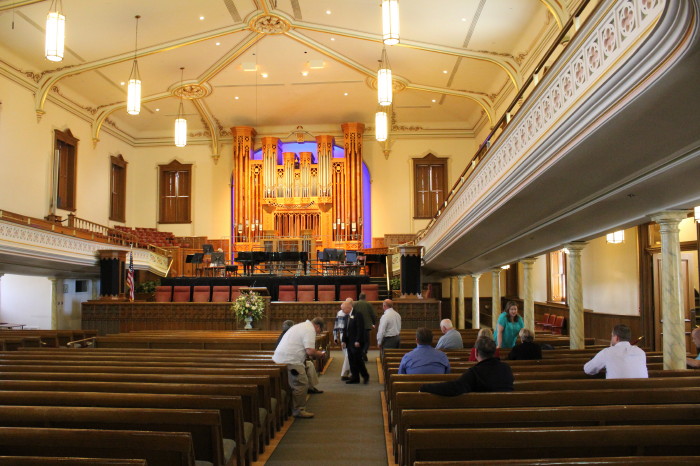
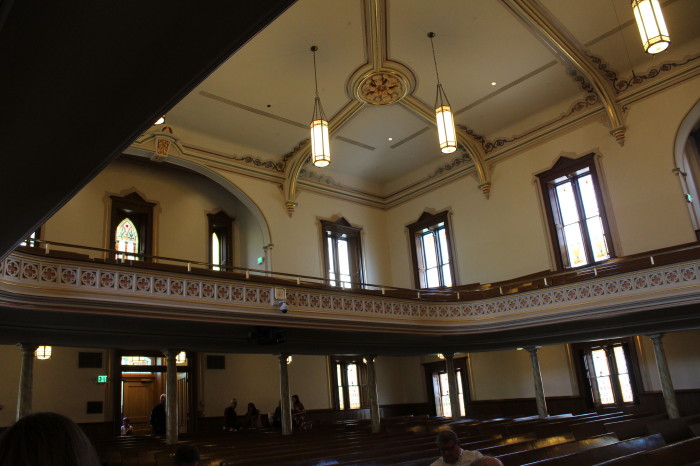
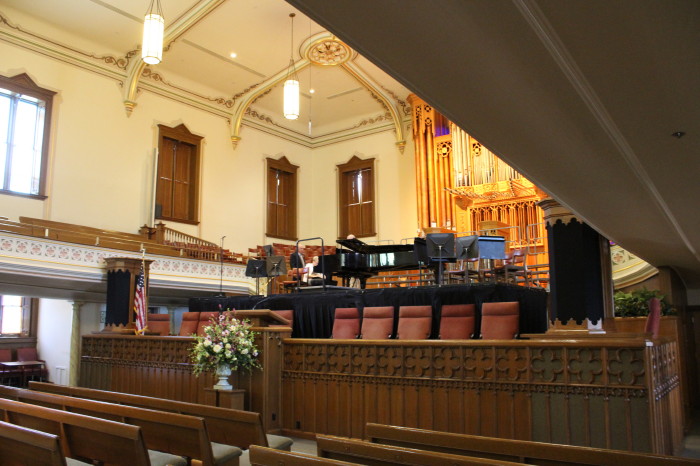
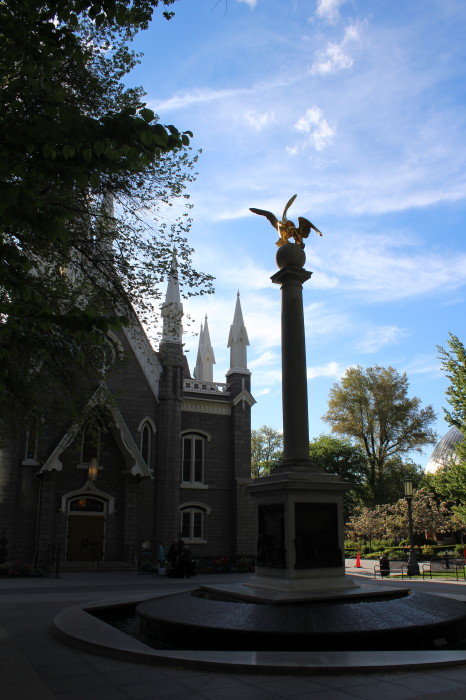
The Seagull Monument located on
Temple Square, is a tribute to the history behind the state bird
of Utah. After the pioneers arrived in the Salt Lake Valley in
the summer of 1847, the next winter was a mild one. The early
settlers planted crops early and were looking forward to the
harvest. However, after planting approximately 900 acres of
wheat, a “great numbers of large, black crickets…came swarming
from the foothills literally by millions.”
Attempts to drown, burn, bury
and club the infestation were unsuccessful. The Saints pled to
the Lord to deliver them from the plague of crickets, which some
likened unto Egypt’s curse of locusts. On June 9th, great flocks
of seagulls from the Great Salt Lake descended upon the crickets
and fed upon them for over three weeks, saving the crops. George
W. Bean wrote: “They would come by thousands and gobble up those
great fat crickets that were as large as man’s thumb, until they
would get about a pint, seemingly, then they would adjourn to
the water ditch, take a drink and throw up all their crickets –
rest themselves a little, then back to slaying the black
‘monsters’ again.” To those observing the experience, it
appeared that the seagulls were throwing back up the entire
crickets. In actuality, they would regurgitate only the
crickets’ exo-skeleton which they could not digest.
The Church of Jesus Christ of
Latter-day Saints commissioned Mahonri M. Young, a well-known
LDS sculptor, to create a monument depicting the miracle of the
seagulls. The monument contains four relief panels depicting the
miracle as well as two bronze seagulls atop a granite column. It
was completed, placed on Temple Square and dedicated on
September 13, 1913 by Joseph F. Smith, then President of the
Church. Seagulls remain protected in Utah to this day.
After seeing the seagulls
monument I then went inside the South Visitor Center which
features exhibits and artifacts about the construction of the
temple and importance the religion places of family.
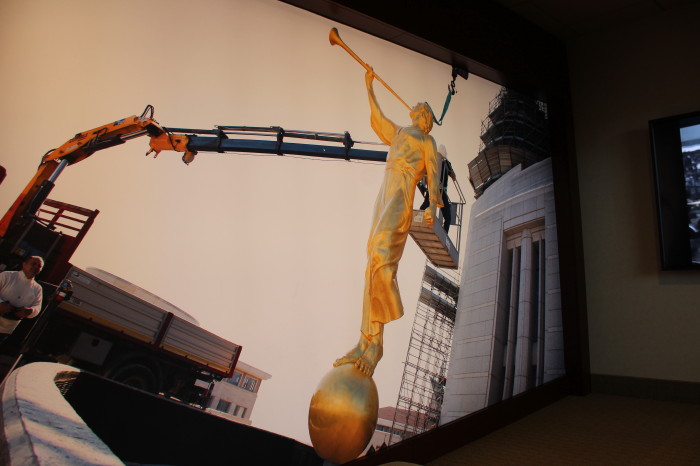
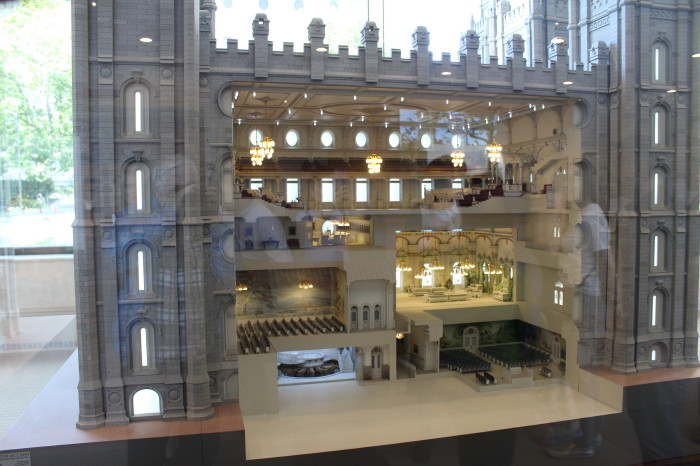
Cut away of temple model.
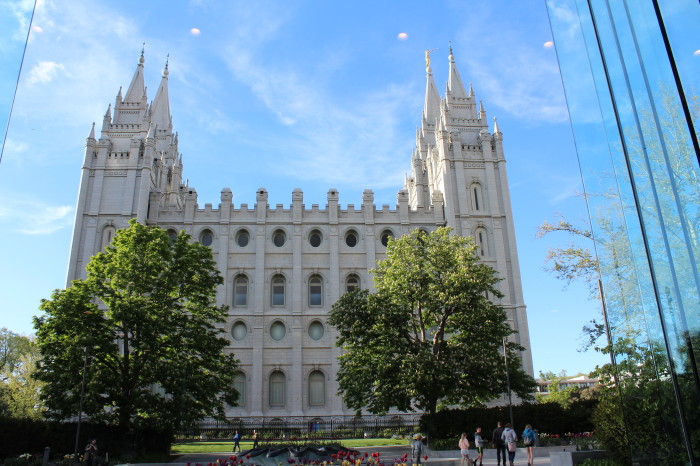
And now the full size.
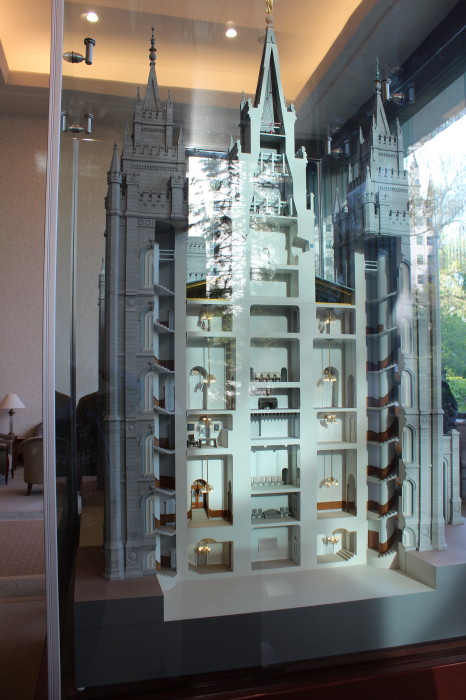
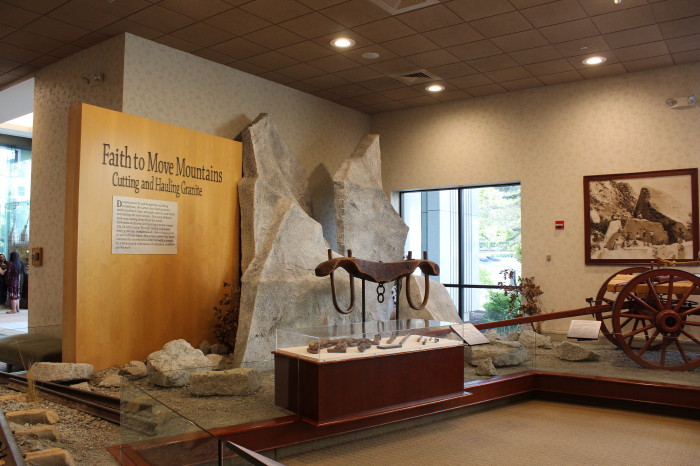
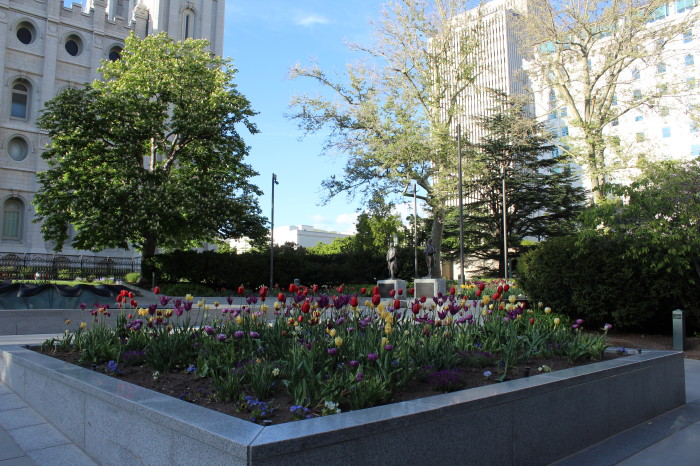
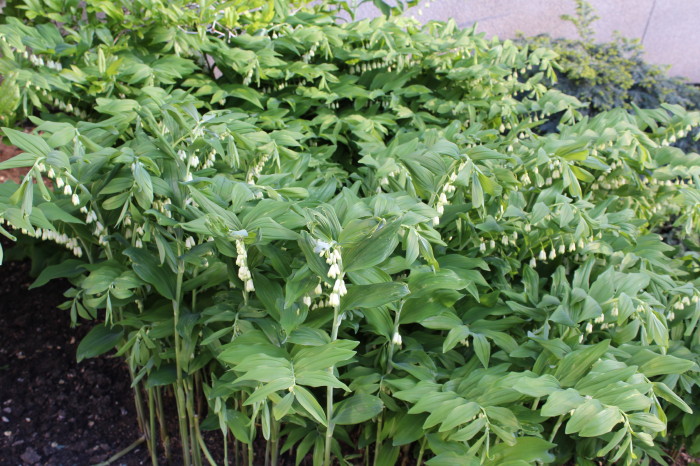
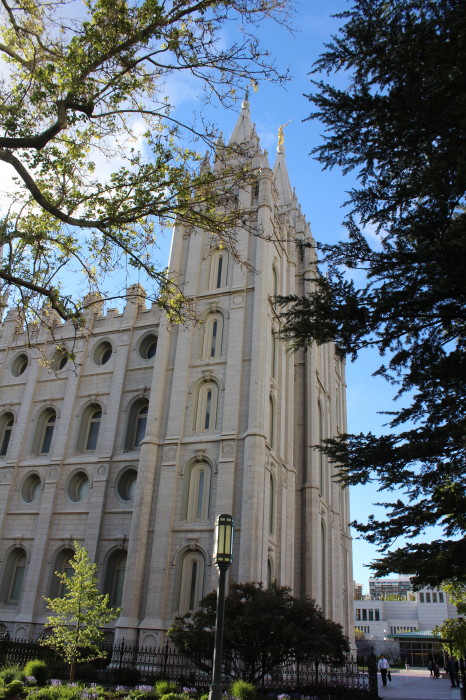
Southeast side of Temple.
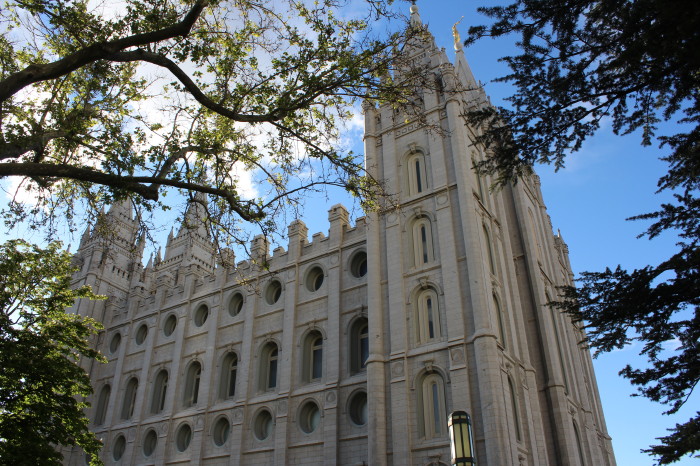
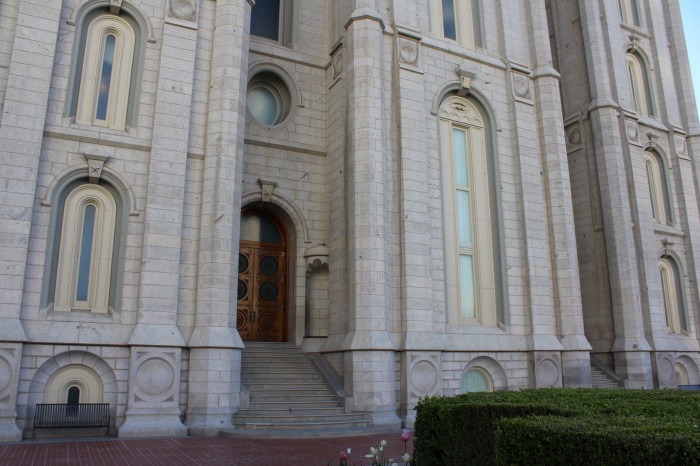
East front side.
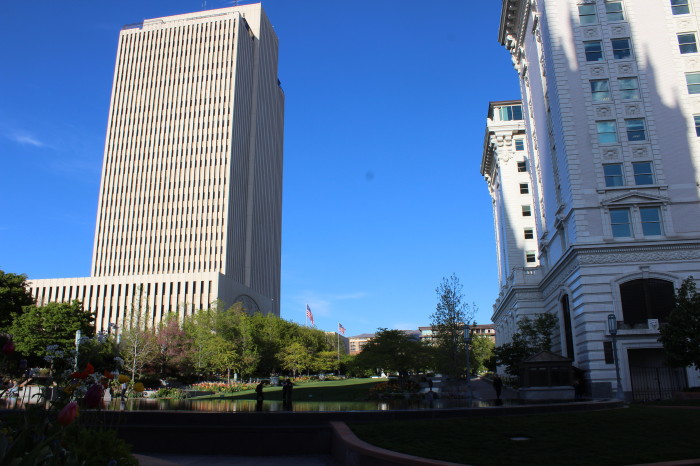
View from front door looking east.
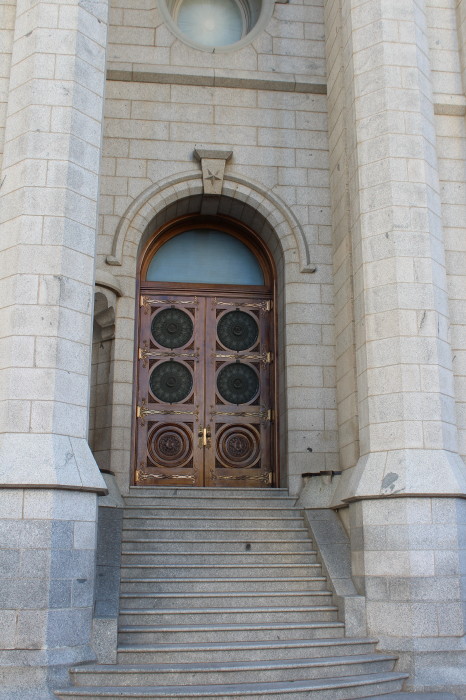
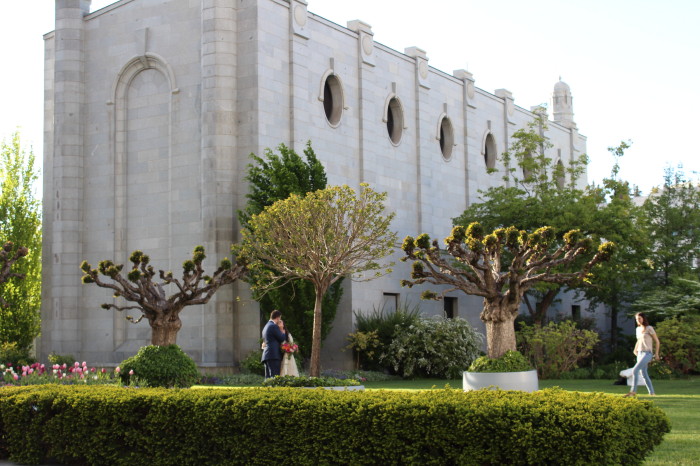
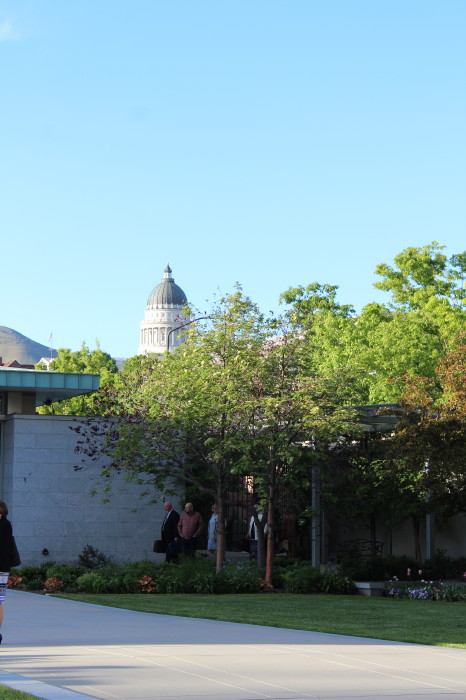
Dome of State Capital looking north.
Another capital city to add to my list of capital cities visited.
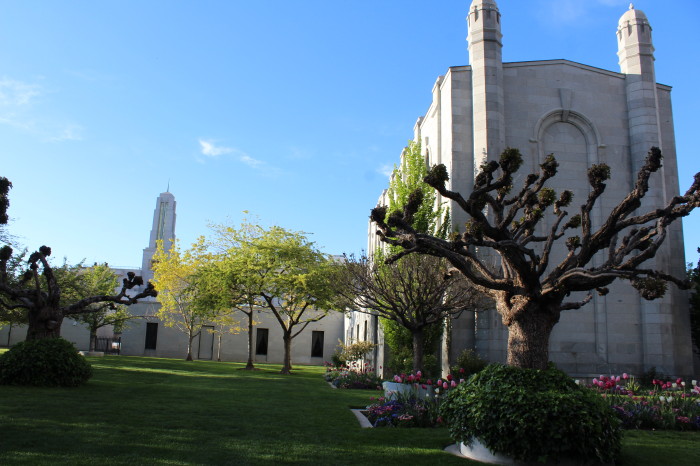
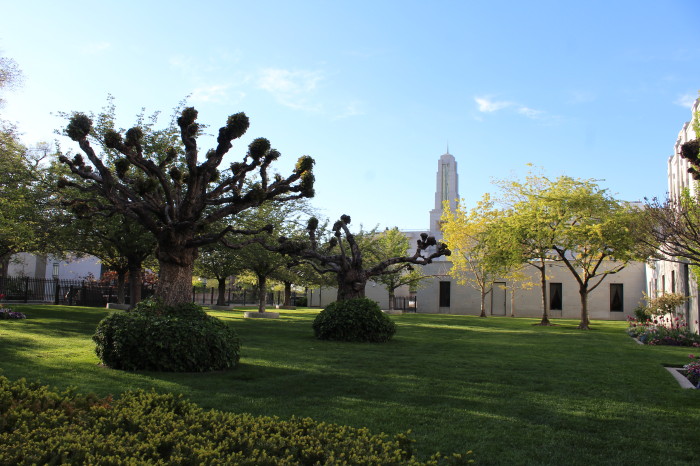
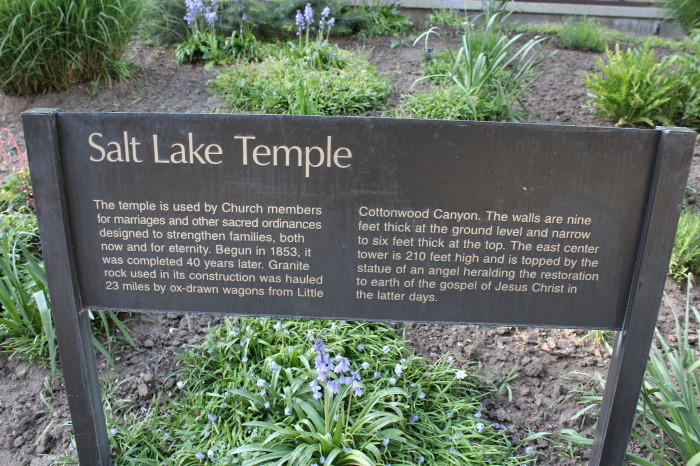
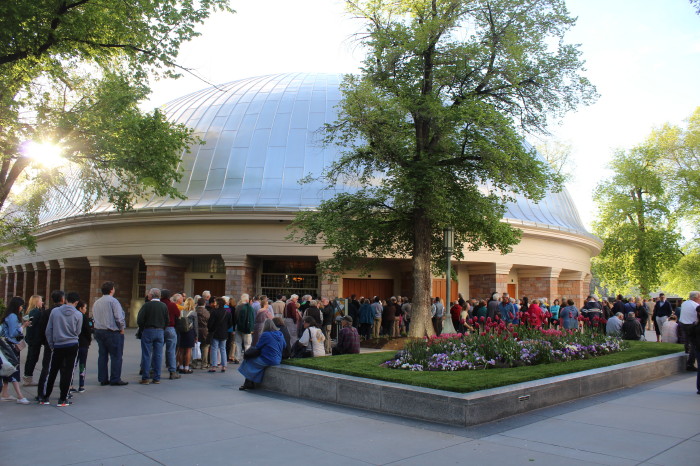
The crowd waiting for the Tabernacle doors to open
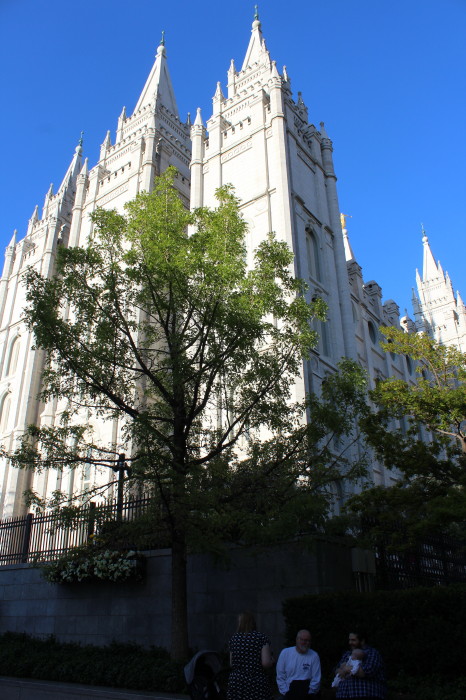
West side of temple.
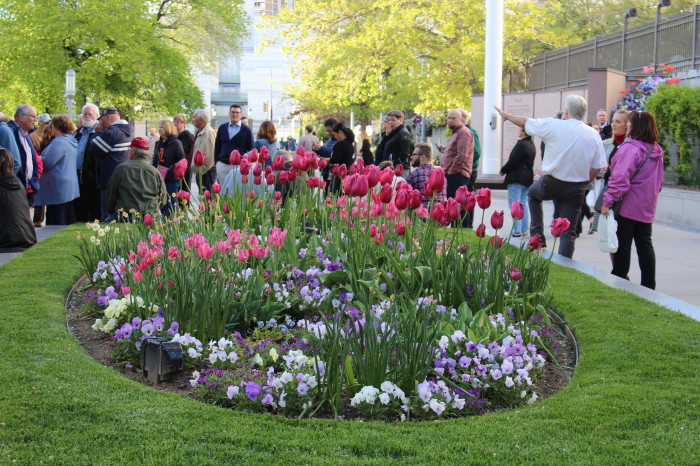
Springtime in Utah.
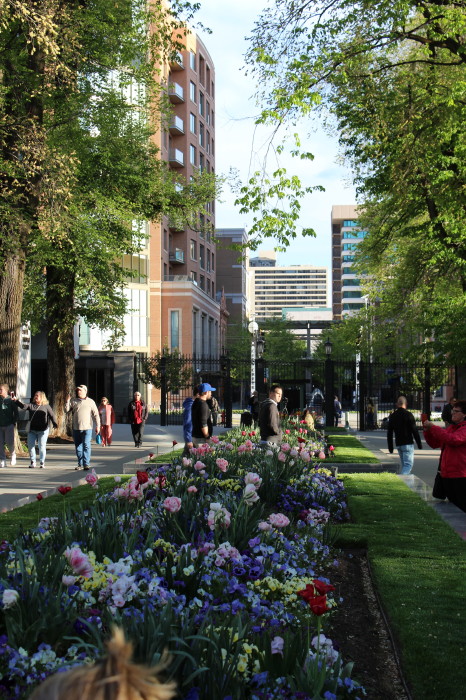
A colorful campus.
Visitors may enjoyed a leisurely stroll or take a guided tour
through spring, summer or autumn gardens that are redesigned and
replanted every six months. More than 16,500 bedding plants and
250 flower beds surround the plaza, an oval reflecting pool and a
fountain. A 4-acre rooftop prairie garden includes hundreds of
native flowers, trees and drought-tolerant plants.

The doors are opening, let the gray hairs in.
Completed in 1867, the
tabernacle seats 6,500 under one of the worlds largest domed
roofs without center supports. The building has remarkable
acoustics, and its 11,623-pipe organ is said to be one of the
finest in existence. The tabernacle has been the home of the
renowned Mormon Tabernacle Choir since the group's inception in
the mid-19th century. The choir's 360 volunteer singers, all
members of the Church of Jesus Christ of Latter-day Saints,
practice and perform weekly.
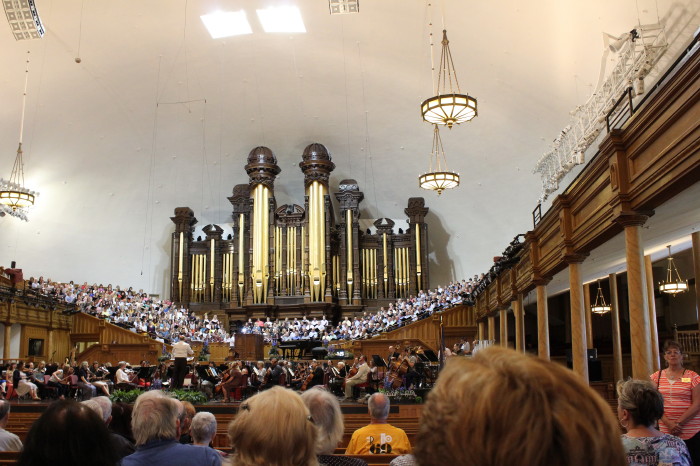
Being inside the Tabernacle
has been on the my bucket list for long time. And being able to
listen to the choir live and in person is a double bucket check.
I remember when I was young listing to the choir live on the
radio and knowing that Salt Lake City was a long way from me.
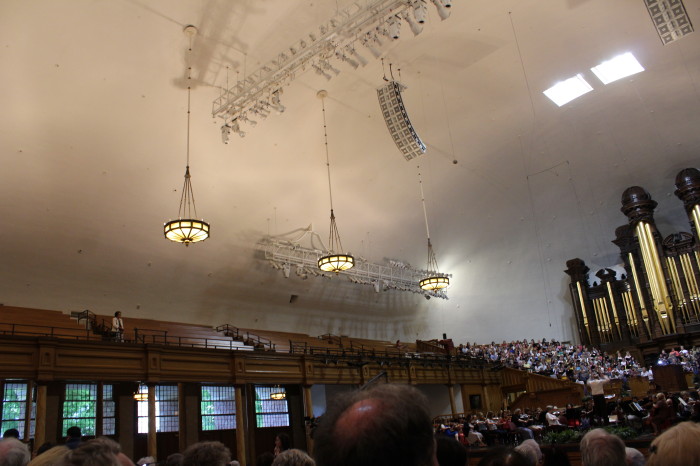
Tonight's rehearsal was for
Sunday's live show. To celebrate the City's Golden Spike
festivities, the choir sang railroad songs. Among the tunes
were Get to the Station on Time, Rock Island Line, Working
On The Railroad, She'll Be Coming Round The Mountain, Wabash
Cannonball and Casey Jones. It's said that a pin dropped at the
front of the cavernous interior can be heard all the way at the
back.
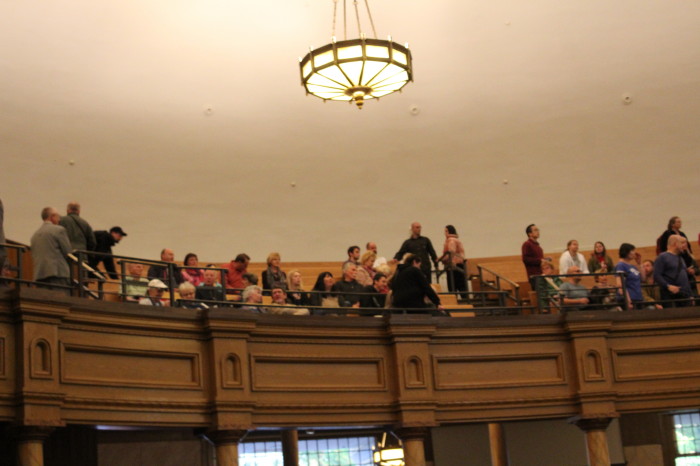
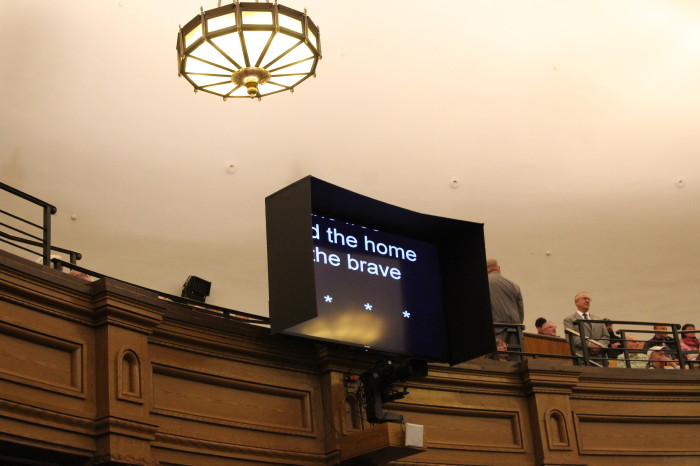
Cue cards for the choir.
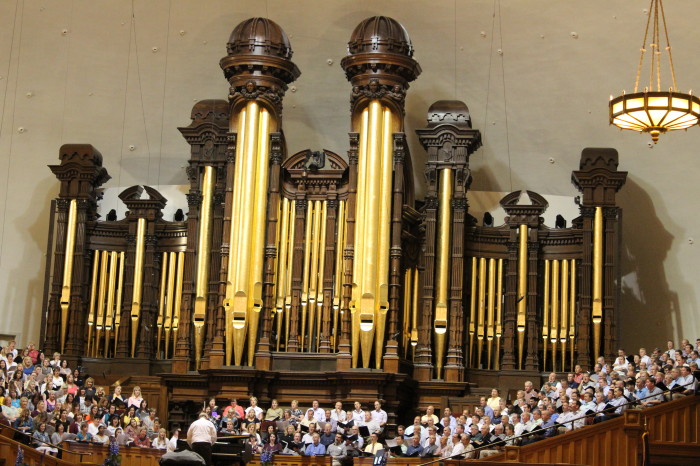
After our recital, we were asked to exit the venue as the rest of
the rehearsal was not for our ears as it contained
proprietary information.
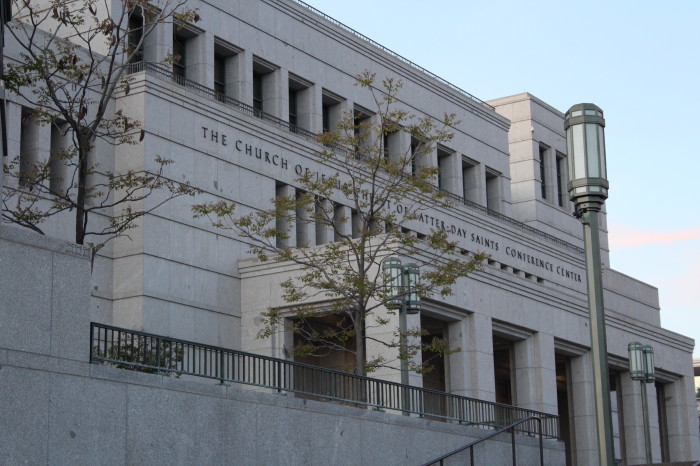
.
North of Temple Square
massive is the 21,000-seat Conference Center with a waterfall on
the south facade and a four-acre garden on the roof. The
building, completed in 2000, to host the LDS Church's
semi-annual conference and musical performances, is an
engineering marvel. The auditorium is large enough to fit two
Boeing 747's inside its acoustically perfect performance hall.
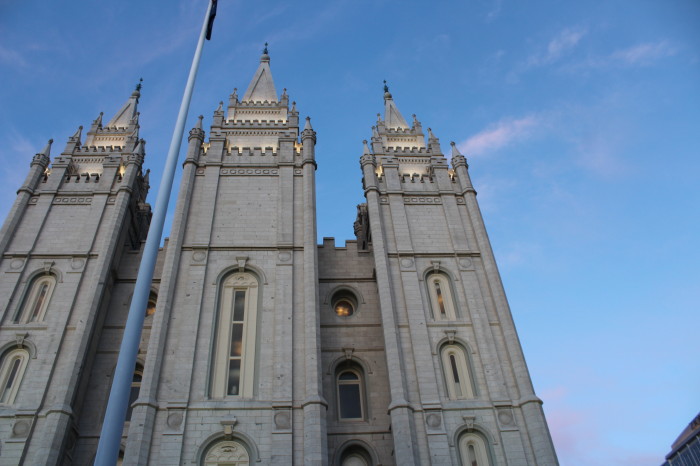
West or back side of temple.

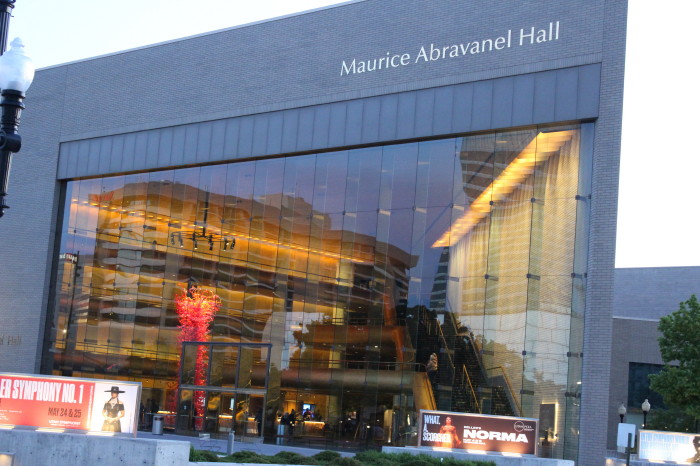
Performances of the Utah Symphony are held in Abravanel Hall.
Leaving Temple Square I met
up with Elizabeth at the nearest TRAX station to ride Red Line
703 out to University Medical Center. I've ridden part of the
Red Line south of the construction but by taking this last leg,
I will have ridden the whole line with a break in the line due
to construction. Although Elizabeth had already ridden this leg,
she was happy to join me and add to her rail mileage. We caught
the next car and rode the short distance to the construction,
then walked through the construction site to board the Red Line
at its temporary end of line. It's not often that I am able to
ride streetcars after dark. The cities look completely different
with their night lights on. We had about a ten minute turn
around time before heading back. Arriving back at the
construction site I had now completed riding all the rail
mileage in the Salt Lake City area. From here Elizabeth and I
walked backed to our hotels. Then it was on to my room to get
ready for tomorrow.
Thanks for
reading.
Tomorrow - Big 150 Spike Day.
Text and Photos by Author, Robin Bowers
The
author retains all rights. No reproductions are
allowed without the author's consent
.jpg)
.jpg)

.jpg)

.jpg)